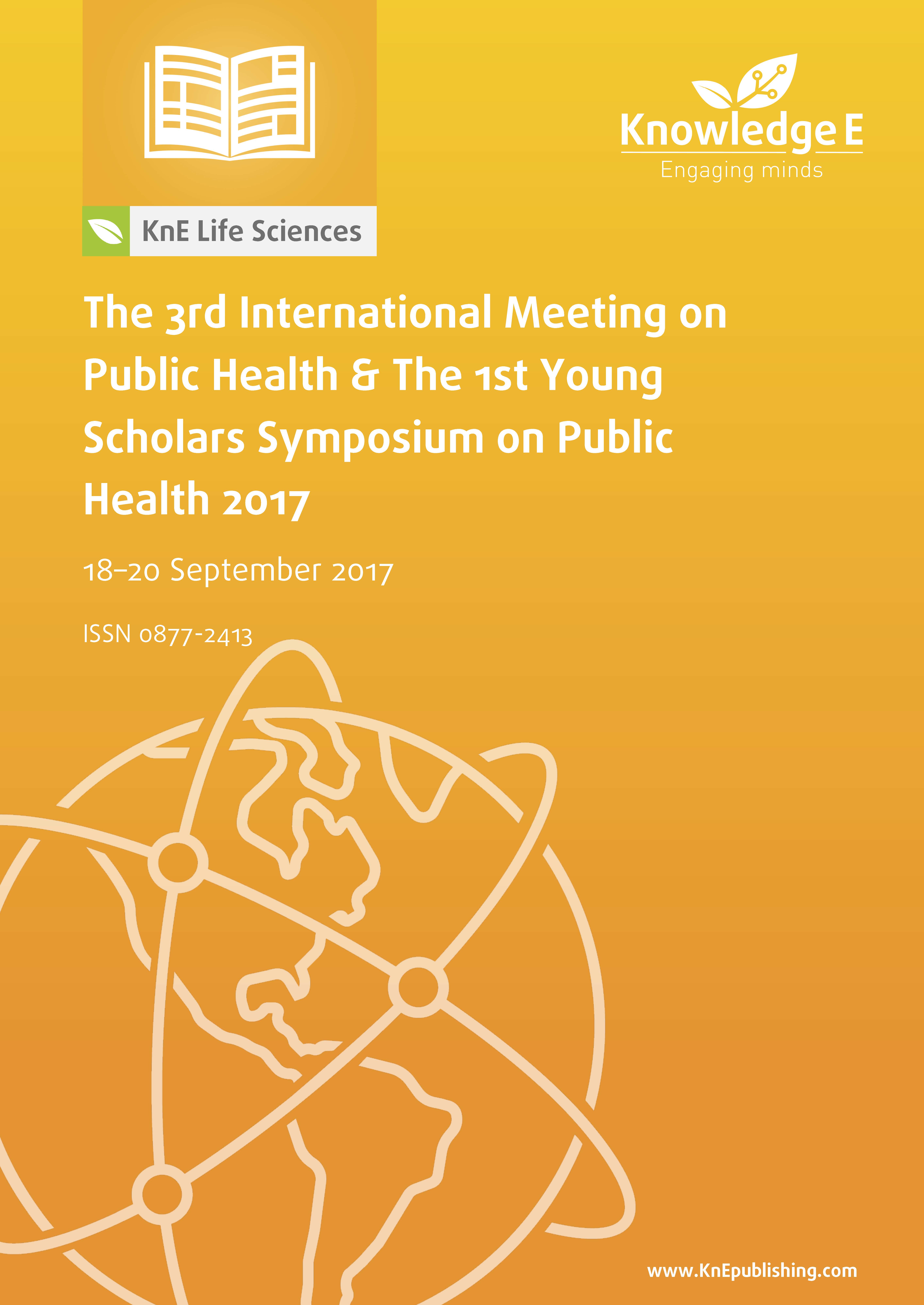Comparing Men’s and Women’s Psychological Preparedness in Cangkringan for Mount Merapi Volcanic Eruptions
DOI:
https://doi.org/10.18502/kls.v4i10.3734Abstract
Mount Merapi is the most active and dangerous volcano in Indonesia with an eruption cycle of approximately five years. Eruptions are unpredictable, causing people who live around the mountain to be prepared for all outcomes. For example, the eruption in 2010 was particularly devastating and caused loss of lives, livestock, and homes, not only due to the eruption itself but also to people panicking during the evacuation process. Such panic could be reduced by ensuring that residents are psychologically prepared for future eruptions through enabling effective responses to natural disasters which have limited psychological impact and that prevent deaths while fostering resilience. The aim of this research was to determine the differences in psychological preparedness between men and women who live in Cangkringan, Sleman to face future Mount Merapi volcanic eruptions. Cangkringan was chosen because it experienced the most deaths during the 2010 volcanic eruption and because of its high potential for eruption exposure. Prior research has shown that gender is the only demographic variable that significantly affects psychological preparedness. Thus, the Kesiapsiagaan Psikologis
Merapi (KPM) questionnaire was administered to 47 female participants and 43 male participants, and the results were statistically analyzed by using independent sample T-tests to compare psychological preparedness between men and women. The results showed that psychological preparedness for Mount Merapi volcanic
eruptions among men and women in Cangkringan differ, which aligned with previous research. One contributing factor found was the difference in gender roles during times of disaster that were extensions of everyday gender roles. In their everyday lives, men’s roles mostly worked, either as farmers, coolies, employees, and so on. Meanwhile, women’s roles were related to household jobs, such as taking care of children and other family members, cooking, and so on. This difference caused different preparation, information, as well as a response while disaster between men and women.
Keywords: psychological preparedness for natural disaster, gender, Merapi Mountain volcanic eruption
References
Suryamihardja, R.D. (2009). Peranan IDS dalam manajemen bencana. Globe Volume, 11(1), 73-78.
Utari, A.R., Putri, F. E., Diantari, H. C., Hadhary, R. G., Qolbi, S. H. (n.d). Dinamika Perubahan Kehidupan Masyarakat Lereng Merapi Sebelum dan Setelah Erupsi 2010. Retrieved February 3, 2016 from http: //hmgf.fmipa.ugm.ac.id/
Kementerian Energi dan Sumber Daya Mineral Badan Geologi. (2014). G. Merapi-sejarah letusan. Retrieved August 27, 2016 from http://www.vsi.esdm.go.id/index.php/gunungapi/data-dasargunungapi/542-g-merapi?start=1
Franciska, C. (2014). Vulkanolog: Erupsi Sinabung belum sebesar Merapi. BBC. Retrieved July 29, 2017 from http://www.bbc.com/indonesia/majalah/2014/01/140121_sains_gunung_sinabung
Maarif, S. (2013). Merapi menyapa kehidupan. Jakarta: Badan Nasional Penanggulangan Bencana.
Rusmiyati, C. & Hikmawati, E. (2012). Penanganan Dampak Sosial Psikologis Korban Bencana Merapi.
Informasi. 17(2), 97-110.
Rurit, B. (2010). Mengapa Merapi banyak menelan korban pada 2010?. Tempo. Retrieved September 12, 2016 from https://m.tempo.co/read/news/2010/10/27/173287496/mengapa-merapi-banyak-menelankorban-pada-2010
Merapi meletus lagi, warga Kaliurang panik. (2010). Viva. Retrieved January 26, 2016 from http://www. viva.co.id/berita/nasional/186910-merapi-meletus-yogya-panik-dan-listrik-mati/
Panik, pengungsi Merapi tewas tertabrak truk. (2010). Viva. Retrieved January 26, 2016 from http://www.
viva.co.id/berita/nasional/185824-panik-pengungsi-merapi-tewas-tertabrak-truk/
Hidayat, R. (2011). Dampak Kesehatan Mental dan Psikososial Bencana Erupsi Gunung Merapi 2010. Simposium Gunung Merapi: Kajian Perilaku, Dampak, dan Mitigasi Bencana Akibat Erupsi Merapi 2010. 143-151.
Reser, J. & Morrissey, S. (2009). The crucial role of psychological preparedness for disaster. Retrieved January 25, 2016 from https://www.psychology.org.au/inpsych/psychological_preparedness/#top
Ulfah, E. (2013). Intervensi spiritual emotional freedom technique untuk menurunkan gangguan stres pasca trauma erupsi Gunung Merapi. Journal of Educational, Health and Community Psychology, 2(1), 38-57.
Guterman, P.S. (2005). Psychological preparedness for disaster. Retrieved March 22, 2016 from http: //www.ceep.ca/resources/Guterman2005_Psychological_Preparedness_for_Disaster.pdf
Zulch H.R., Morrissey S.A., Reser J.P., Creed P. (n.d.). Psychological Preparedness for Natural Disasters. (n.p.).
Malkina-Pykh, I. G. & Pykh, Y. A. (2013). An Integrated Model of Psychological Preparedness for Threat and Impacts of Climate Change Disasters. Proceedings of the III International Conference on Disaster Management and Human Health: Reducing Risk, Improving Outcomes. 121-133.
Morrissey S. A. & Reser, J. P. (2003). Evaluating the effectiveness of psychological reparedness advice in community cyclone preparedness materials. The Australian Journal of Emergency Management, 18(2), 46-61.
Clode, D. (2010). Coping with Fire: Psychological Preparedness for Bushfires. Retrieved November 22, 2016 from https://www.researchgate.net/publication/ 270275555_Coping_with_fire_Psychological_preparedness_for_bushfires
Boylan, J.L. (2016). The Development and Validation of the Bushfire Psychological Preparedness Scale (BPPS). Disertasi Pasca Sarjana. Faculty of Psychology University of Western Australia, Australia.
Fatimah, D. (2008). Gender dalam Pengelolaan Bencana: Studi Kasus Merapi. Retrieved February 16, 2016 from https://www.academia.edu/2382085/Gender_dalam_Pengelolaan_Bencana_Merapi
Kementrian Pemberdayaan Perempuan dan Perlindungan Anak. (2011). Gender dalam bencana alam dan adaptasi iklim. Retrieved November 15, 2016 from http://www.kemenpppa.go.id/lib/uploads/list/ c3b33-6.-gender-dalam-bencana-alam-dan-adaptasi-iklim.pdf
Ghafur, W.A., Noorkamilah, Gazali, H. (2012). Resilience perempuan dalam bencana alam Merapi: Studi di Kinahrejo Umbulharjo Cangkringan Sleman Yogyakarta. Welfare, Jurnal Ilmu Kesejahteraan Sosial. 1(1), 43-68.
Slemankab. (2011). Data sebaran penduduk KRB II & III Gunung Merapi. Retrieved October 11, 2016 from
http://www.slemankab.go.id/1260/data-sebaran-penduduk-krb-iii-ii-gunung-merapi.slm
Bartlett, J.E., Kotrlik, J. W., & Higgins, C.C. (2001). Organizational research: Determining appropriate sample size in survey research. Information Technology, Learning, and Performace Journal, 19 (1), 43- 50.

